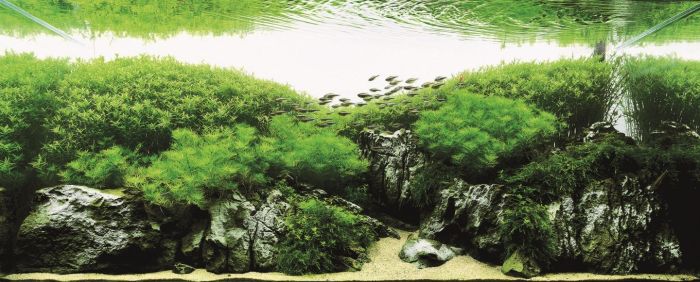|
|
Fish Aquarium
|
The solute content of water is perhaps the most important aspect of water conditions, as total dissolved solids and other constituents dramatically impact basic water chemistry, and therefore how organisms interact with their environment. Salt content, or salinity, is the most basic measure of water conditions. An aquarium may have freshwater (salinity below 500 parts per million), simulating a lake or river environment; brackish water (a salt level of 500 to 30,000 PPM), simulating environments lying between fresh and salt, such as estuaries; and salt water or seawater (a salt level of 30,000 to 40,000 PPM), simulating an ocean environment. Rarely, higher salt concentrations are maintained in specialized tanks for raising brine organisms.
Saltwater is typically alkaline, while the pH (alkalinity or acidicity) of fresh water varies more. Hardness measures overall dissolved mineral content; hard or soft water may be preferred. Hard water is usually alkaline, while soft water is usually neutral to acidic. Dissolved organic content and dissolved gases content are also important factors.
Home aquarists typically use tap water supplied through their local water supply network to fill their tanks. Straight tap water cannot be used in countries that pipe chlorinated water. In the past, it was possible to "condition" the water by simply letting the water stand for a day or two, which allows the chlorine time to dissipate. However, chloramine is now used more often and does not leave the water as readily. Additives formulated to remove chlorine or chloramine are often all that is needed to make the water ready for aquarium use. Brackish or saltwater aquaria require the addition of a commercially available mixture of salts and other minerals.
More sophisticated aquarists modify water's alkalinity, hardness, or dissolved content of organics and gases, before adding it to their aquaria. This can be accomplished by additives, such as sodium bicarbonate, to raise pH. Some aquarists filter or purify their water through deionization or reverse osmosis prior to using it. In contrast, public aquaria with large water needs often locate themselves near a natural water source (such as a river, lake, or ocean) to reduce the level of treatment. Many hobbyists use an algae scrubber to filter the water naturally.
|
|









